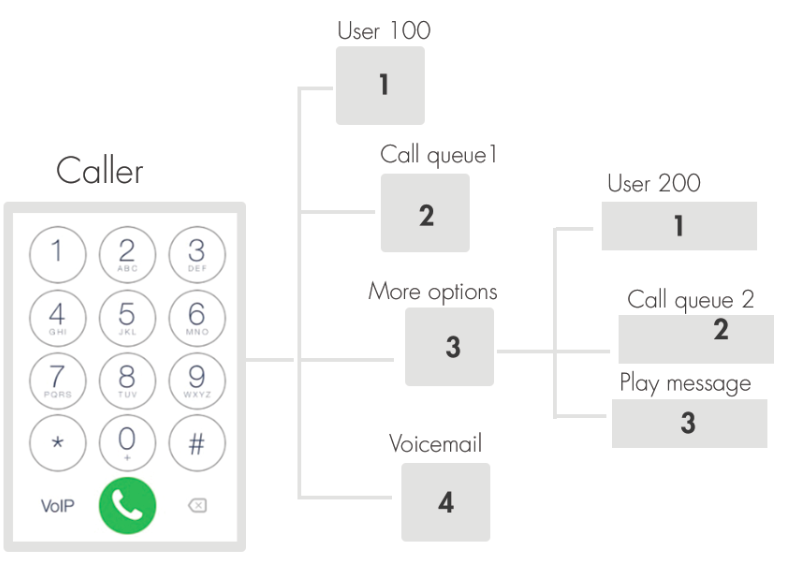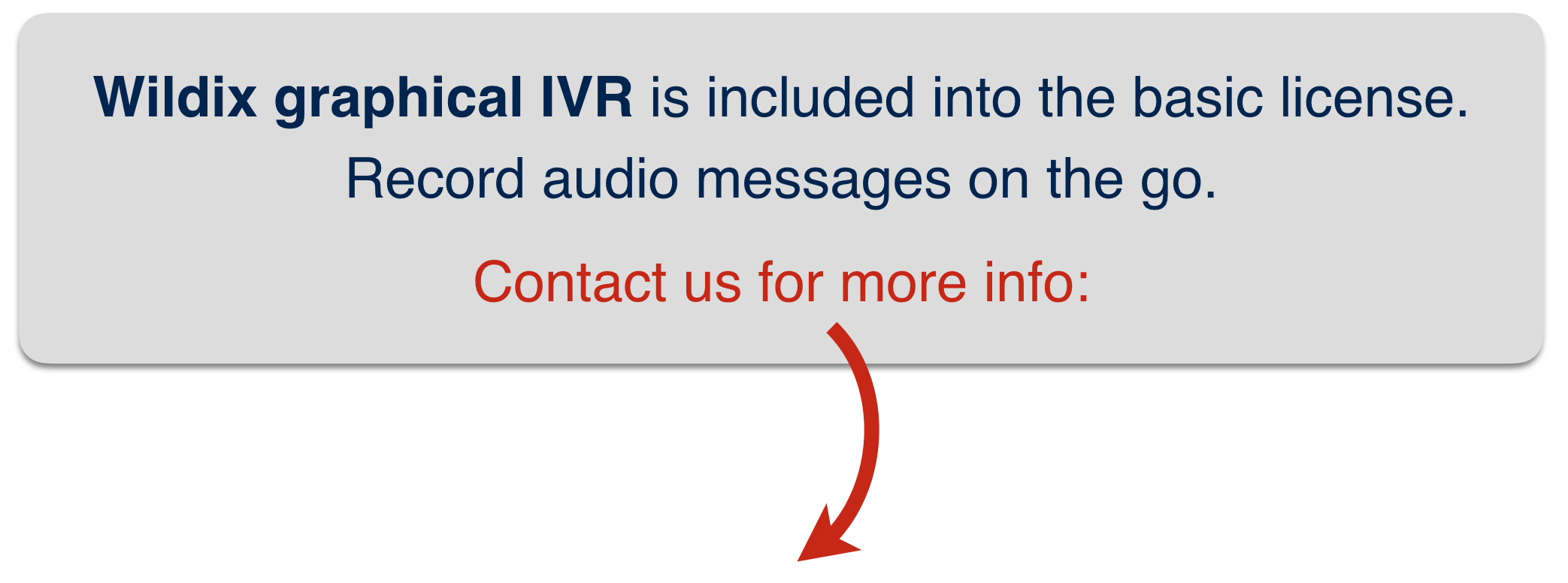What is IVR?

Interactive Voice Response (IVR) is a technology allowing humans to interact with phone systems through DTMF tones input via keypad, or by speech recognition.
Interactive Voice Response is not necessarily related to VoIP technology.
Examples and benefits
An example of IVR is when you call a company or business, and then you hear “press 1 for technical assistance, press 2 for sales support, press 0 to speak to the operator”.
After you make your choice, your call is routed to an extension/call queue, or, for example, a voice message is reproduced to you. Otherwise you enter an IVR submenu which offers more options that you can select.
Thanks to Interactive Voice Response service in some cases it is possible to completely avoid human intervention, for example, you can call your GSM operator and you can add funds to your account or you can call your bank to receive an up-to-date account information – all this without speaking to the operator, simply by following the voice commands. IVR technology is often used to make automated telephone surveys when the called user is asked to answer questions by pressing digits.
In this way, by minimizing or even avoiding the human interference, IVR allows the companies to handle higher volumes of phone calls, reduce costs and improve the customer satisfaction.

IVR vs. Automated attendant
Automated attendant (Auto-attendant, AA, or virtual receptionist) functions as DISA (Direct Inward System Access).
As to IVR, it is a more intelligent and sophisticated version of an auto attendant, which offers an advanced level of interaction with the telephone system.
At each step (node), you can set up the IVR application to route the call to a specified destination (extension, call queue, whatever) or to send the call to another IVR submenu.
How does it work?
As a rule, callers are invited to select different options by pressing the digits.
IVR application is usually set up via a Graphical User Interface, which allows a user with little to no technical knowledge to create and to deploy complicated IVR trees in minutes.
Here is an example of an IVR tree:
In this example, caller is invited to select the language (level 1), to select the department (level 2), otherwise he/she can press the back code to go back to previous menu. After selecting the option of the second level, user is connected either to an extension (English speaking Sales or Tech support operator) or to the call queue (German speaking Sales or Tech support call group).
Wildix IVR
On this page you can find an example of setting up a simple tree illustrated on the scheme above.
IVR and all the related components (including recording of call messages and management of call queues) can be set up via WMS.
An example of the IVR tree as it appears in the WMS:

